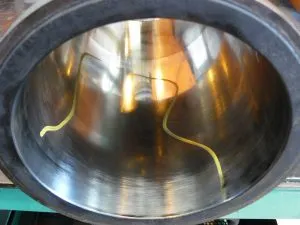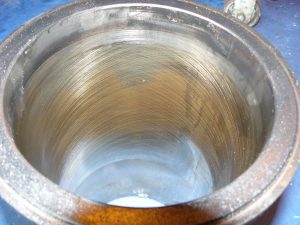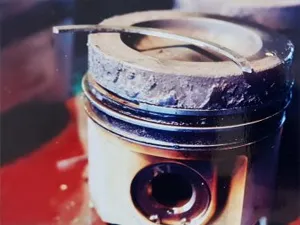Does FTC Decarbonizer really work?
To answer the question “Does FTC Decarbonizer really work?“, take a look at these photos. This photo is of a cylinder from a Caterpillar 3508 diesel engine at 8,000 hours. It was used in an earthmoving machine in a large mining operation in Australia. It was torn down and rebuilt prior to the normal Caterpillar policy of 11,000 hours because the engine was exhibiting bad blow-by caused by glazed cylinder bores, and major carbon build-up in the entire combustion area. It was also found that the cylinders and pistons were badly worn. As per policy, new cylinder liners and new pistons and rings were fitted. No FTC Decarbonizer was used with this particular engine. The area marked within the yellow line shows particularly the mirror-like finish of the glazed cylinder bore.
FTC Decarbonizer Extends Engine Life
This photo is of a cylinder from a Caterpillar 3508 diesel engine at 15,000 hours. It is the same type of machine as the previous photo. This machine had used FTC Decarbonizer from very early in its life. It did not show any outward signs of problems at the Caterpillar recommended rebuild of 11,000 hours, i.e., blow-by, exhaust smoke, power loss etc., so it was determined not to rebuild at that time. At 15,000 hours, Caterpillar very strongly encouraged that the engine be torn down and rebuilt. As seen, the cylinder cross hatch remains intact – no evidence of hard carbon buildup or cylinder wear. The only difference between these two engines is that one used FTC Decarbonizer and the other did not.
Hard Carbon Build Up Can Destroy Engines
This photo is from a Cummins engine used in a heavy vehicle, also from a mining operation in Australia. It shows how hard carbon builds up on pistons in diesel engines and the destruction that it can cause. The hard carbon has caused the top piston ring to break as a result of build up in the ring groove. This particular engine had to be rebuilt because of the breakdown. No FTC Decarbonizer had been used with this engine.
This photo shows a piston from a Cummins engine used in the same mining operation as the previous photo. The engine was torn down for rebuild at the scheduled hours of operation. This engine had used FTC Decarbonizer for a period of time. No carbon build up. No wear.
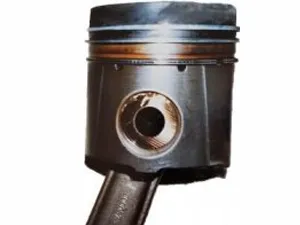
This is a very interesting photograph. This cylinder and piston is from a MTU 1875HP engine in a Komatsu 630E rear dump truck (those monster dump trucks used in large-scale mines). This is at 23,000 hours! This engine had used FTC Decarbonizer from new, i.e. whole of life. The piston is totally carbon-free! The cylinder has no wear and the cross-hatch is totally intact. The pistons and cylinders could be reused if needed. At 23,000 hours!
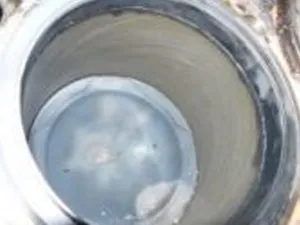
All the above photographs and the information provided are the result of actual, real-life, long-term statistical field trials conducted on a variety of engines in a controlled test environment over a specific period of time. The photographs are real and unaltered.
For information on the science behind FTC Decarbonizer, how it works etc., click here.
-
FTC Decarbonizer™
Buy Now This product has multiple variants. The options may be chosen on the product page

